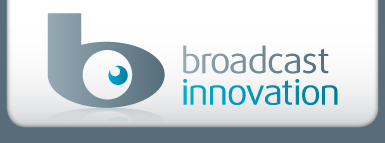MAM integration for 2012… Frankenstein or Sleeping Beauty?

TVB Europe’s November 2011 media management feature
Working as an independent consultant, specialising in media management and workflow development, I was recently asked by the CEO of a growing broadcaster “if we could start from scratch next year how should we improve our mam strategy?” An apparently reasonable question I thought. Yet despite having worked through successful mam based projects over the last 10 years with clients including ESPN Star Sports, NRK, Channel 4, MTV Northern Europe, HBO Asia, Al Jazeera and SBS Networks, I admit I struggled for an easy answer.
At the IBC in September around 400 technology vendors, partners and integrators offered a mam capability as part of their value proposition. Improved content creation, packaging and distribution workflows were promised by everyone. With such wide choice has mam now matured and are clear choices any easier? Perhaps our CTO’s “reasonable question” can be answered by sharing what has worked for others so far. And by looking at better solutions architecture and integration, and the skills and motivations required to deliver improved media asset management.
Solutions architecture for 2012
There is a wider range of solutions architectures than ever before to improve any scale of media management. Today’s island subsystems in production, post production, graphics and playout are potentially now so performant that for some cases I question whether a separate mam system is necessary. The interoperability of content, its metadata, projects and libraries, whilst still a delicate area, is now mainstream. Ironically, many manufacturers champion their compatibility and interoperability with partners (and competitors) as much as their own core value proposition. Avid, EVS and Grass Valley, as examples, regularly vie with each other to be the most compatible with Apple’s Final Cut. Recent “X” rated news has clouded this somewhat but I hope it makes the point; keep an eye on Adobe too.
Other technologies help manage high volume incompatibilities throughout the content lifecycle. Harmonic or Telestream for example, can transform almost any legacy file and send it anywhere; often unnecessarily in a poorly designed workflow. As a result thousands of duplicate file copies going nowhere now infect many broadcasters’ storage systems. End to end media lifecycle management is just one reason to consider better enterprise mam.
Other reasons include: helping staff across the business to search and access material to collaborate more efficiently and, sharing and monitoring both content and infrastructure. Where multivendor technology needs to be integrated to improve workflow many mam vendors have progressed or forced toward software systems integration. This is evident in multichannel playout systems where often only the mam vendor can properly integrate management systems such as ad sales, traffic, scheduling and increasingly new media distribution. Only by durable long term integration between mam and channel management systems can media distribution businesses now succeed.
Whether islands and/or enterprise are required, a technological economy of scale can now only be gained by having the right software integration capabilities and partnerships. These skills are now the key enablers in achieving secure solutions architectures which comprise generic integration platforms, virtualisation and distributed cloud based services.
Is there value in beautiful silent integration?
Whilst investment over the next 3-5 years could be dramatically lower on technology costs there will be increased investment in specialist services. Today’s flexible software driven systems based on IT offer higher performance, more flexibility and resilience but require careful handling. Those key individuals that understand properly the use cases and potential workflow improvements, who can also liaise with technologists, are currently still a rare breed. Software integration, ongoing workflow development and flexible operational support are the key new disciplines required to maintain a strong mam ecosystem.
A clear danger sign early in a mam project is when a few smart people on the client’s IT side, often focussed on in-house IT access or the scheduling system, start talking “in code” with supply-side developers. A short term boost of well intentioned technical problem solving is often followed by “Frankenstein integration” with too many hidden and poorly documented technical workarounds. Structuring wider review of these early decisions and risks by involving key users, the project manager and the support team can avoid deeper problems with ongoing workflow improvement, scalability in adding new services and operational support.
Many clients do admit they are sometimes slower in delivering their in-house project commitments than specialist technology suppliers, due to limited in-house expertise and capacity. This is a key reason to engage an SI and specialist third party integration partners. Their focus will be matching both sides progress carefully to achieve smooth and timely delivery. An SI’s success depends upon this.
Motivation for success, balancing people with processes
By 2012 mam is not new. Broadcasters continue to look at reorganising their talent, operations and technology using mam and better workflows. Some broadcasters are looking for a second or even third time at mam to drive enterprise efficiency. Carefully balancing new job roles with high volume media processing is a key success factor when delivering improved media asset management.
To achieve this balance and to help heads of operations work effectively with their CTO’s team and potential technology suppliers it’s helpful to use a vision statement. For example: “What would we do next year if the business asks us to deliver increased programming or launch twice as many new channels with no increase in staff?” Clarity of vision helps steer operational development and technology evaluation. This can also help focus and shorten the requirements capture and supplier selection processes. Not more than 3 months to gain a pragmatic overview, solution outline and a draft project plan to drive business using improved mam is now possible.
So which mam strategy would I recommend for 2012 to help our CEO streamline content creation, repurposing and distribution? Regrettably this short story doesn’t offer a “happily ever after”. The improved ROI using mam which has eluded many so far was caused in part by a weak vision, inaccurate scope and poor integration. Somehow if we stitched enough IT and broadcast parts together and added enough volts many hoped the vision would come to life. In 2012 perhaps we’ll create less clunky misunderstood monsters and instead take the opportunity for some beautiful and restful integrated efficiency.
First published in TVB Europe


